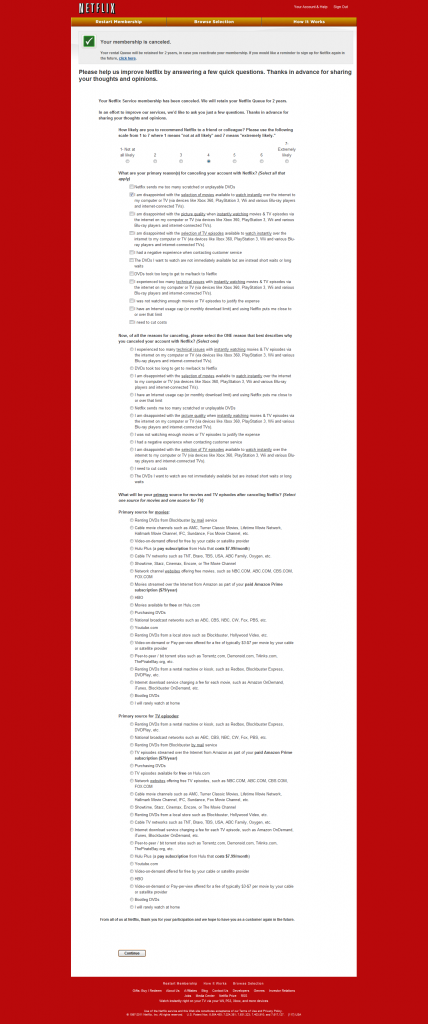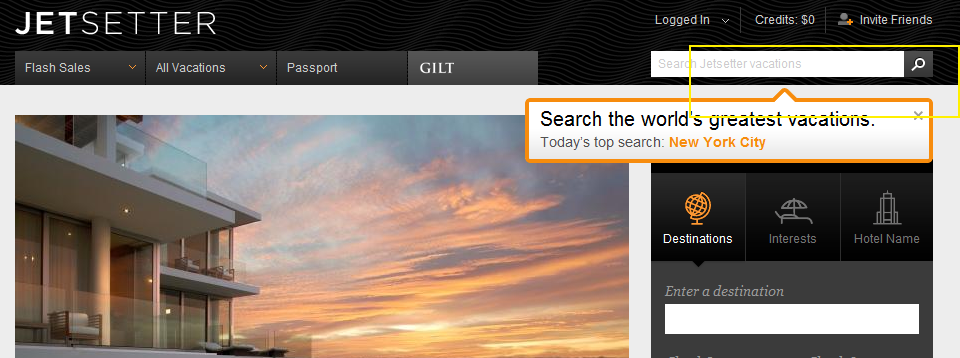I love Netflix.
- They have revolutionized the way we think about movies and media
- They have created a slew of new company ideas and models: "the Netflix for XYZ"
- They have defined streaming content and challenged a traditional, massive industry
- They should be credited with making new platforms and devices desirable: iPhone, Android, Google TV, Xbox, Playstation, Nintendo Wii, etc
- And they are brilliant marketers with a terrific recurring model
... but after years of being a Netflix subscriber, I recently canceled my account. The reason is very simple: Netflix Instant doesn't have enough depth / inventory. We have watched the handful of documentaries that Netflix has (by far their most impressive category) and I even wrote a semi-popular Quora answer to which Instant movies are best: Exit Through the Gift Shop, Man on Wire, The Modernism of Julius Shulman, The King of Kong, The Universe of Keith Haring, Beer Wars, This Film Is Not Yet Rated, Food, Inc., Bigger, Stronger, Faster.
But the catalog hasn't expanded. Meanwhile, Comcast and Redbox have delivered great products / experiences (Redbox is a short-term business - but as a consumer it is absolutely delightful, cheap and easy). The future is clearly the Netflix Instant / streaming model - but it requires a worthy catalog to justify ~$100-$175 / year.
So I canceled my account.... with the hope that I will return as the catalog grows. Good news: Netflix keeps your queue and preferences in tact so that restarting is easy. Maybe they shouldn't do that - but I appreciate it and it certainly helps conversions for re-started memberships.
The most interesting part of the cancellation was the questionnaire (shown below in full). The attention to competition is fascinating: Comcast, Hulu, HBO, Showtime, bit torrents, piracy, etc are all mentioned. Also noteworthy are the answers to the question "why are you canceling?" One answer is "I have an Internet usage cap (or monthly download limit) and using Netflix puts me close to or over the limit." Unfortunately, over the next few years, I worry this will be an increasingly selected answer...
It is absolutely worth browsing the questions and available answers:












